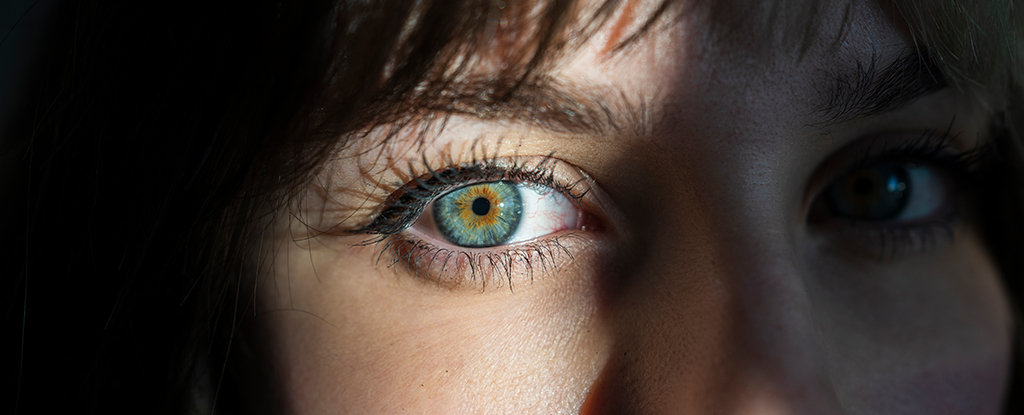Roughly one out of ten people around the globe have an eye color that, in poetic terms, can be likened to the shade of a summer sky, the hue of a tropical ocean, or even the pale tint of a flawlessly cut aquamarine.
In some European populations, that fraction can skyrocket to as high as three out of every four individuals.
Why this color persists in competition with the more earthy tones of a darkly pigmented iris has long been a cause for speculation. Now, anthropologists in the UK propose blue eyes could have a slight edge under dimly lit conditions.
In their preliminary experiment, Kyoko Yamaguchi and her student Faith Erin Cain from Liverpool John Moores University explored the possibility with 39 adult volunteers undergoing a simple 30-second eye test under decreasing intensities of light.
Eye colors were self-reported and then verified as blue or brown categories using a recently developed classification guide, providing the researchers with 25 people with some grade of blue eyes and 14 with light or dark brown eyes.
Once the numbers were crunched, those with bright baby blues could read codes depicted on a wall under significantly less light – a minimum of just 0.7 lux on average – than their brown-eyed peers, who averaged a minimum of 0.82 lux.
Keeping in mind the study is preliminary with a relatively small sample size and yet to be peer-reviewed, the experiment’s findings support the theory that loss of pigmentation in the iris was a trait selected in some populations to maximize vision in low-light environments.
Whether they’re hazel with mossy flecks, storm gray with rims of steel, or verdant with amber rays, all irises consist of a pair of ‘canvases’ splashed with varying amounts of proteins such as melanin.
Liberal doses of the proteins in the overlaying canvas darken the eyes. As pigmentation depletes, the scattering of light through the eye’s transparent layers gives the iris a bluer hue, not unlike how light scattered through the atmosphere takes on its familiar sky tones.
Of course, it’s fair to assume evolution has bestowed us with pigmented irises for a good reason. Given those with darker eyes have lower incidences of conditions like cancer and macular degeneration, an iris full of melanin is likely to bestow a degree of protection.
Around the time humans were starting to settle and figure out this whole farming thing, a mutation occurred in a single individual’s copy of a ‘switch’ for a gene associated with albinism, giving their body an ability to dilute the level of melanin in a very specific location – their eyes.
If this genetic change had also occurred in others at other times in history, it’s long been lost to evolutionary dead ends. This one event, however, was carried into bloodlines far and wide through the ages, to be found today in hundreds of millions around the globe.
Like so many adaptations, the explanation or why this mutation persisted when it did is likely to be complex.
It may have been associated with prestige or beauty, conferred protection against low moods in dark winter seasons, or simply consumed fewer of the body’s resources to construct in hostile conditions where dark eyes were no longer necessary. Maybe all of the above.
If this study has anything to say, seeing that tiny bit better in a cold, twilight world could have tipped the scales, adding to the spectrum of diversity that is the modern human body.
This research is available on the pre- peer review server bioRxiv.





